Planet Earth has been home to humans for hundreds of thousands of years, and it’s served us well. But with the global population ever growing, and humans continuing to pollute and plunder the Earth’s finite resources, our planet is looking increasingly imperilled.
A 2012 World Wildlife Fund report estimated that by 2030 we’ll need the equivalent of two planets in order to sustain our lifestyles. And it’s pretty much a certainty that we’ll have to move at some point, with the Sun forecast to increase in brightness and boil away our oceans in around a billion years’ time.
So scientists are beginning to look towards the stars, figuring out how we might one day set up base elsewhere. We look at the latest research into how we’ll harness resources, build a settlement, grow food, make babies and stay healthy on our new home.
Harvesting resources - Asteroids will be plundered for materials and fuel
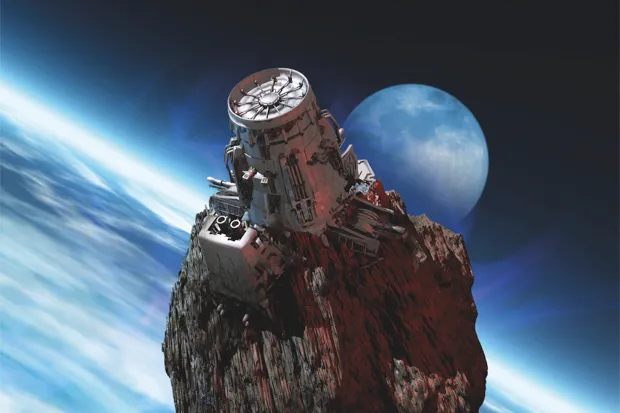
A new era of space exploration began in January 2018 with relatively little fanfare. A tiny satellite – Arkyd-6 – was lofted into orbit on board an Indian rocket. Designed and built by US outfit Planetary Resources, it’s an asteroid scout tasked with searching out potentially mineable space rocks.
The thing about space exploration is that it’s a constant fight against the relentless downwards tug of Earth’s gravity. Taking everything you need with you from the outset means having to outrun our planet’s pull, and that’s super-expensive. It costs thousands of dollars to launch a single kilogram into orbit, even with the recent advances in rocket technology by companies like Elon Musk’s SpaceX. Far better to launch light, harvesting what you need from space. And there are few places more enticing than asteroids.
As leftover building blocks from the formation of our Solar System, asteroids are rich in precious commodities such as platinum, tungsten and iron. The temptation they offer has triggered the cosmic equivalent of the famous California Gold Rush of the mid-1800s. Last year, Luxembourg became the first European country to pass a law that allows asteroid mining companies in the country to keep what they find in space.
Meanwhile in the UK, Scottish aerospace company Asteroid Mining Corporation is currently trying to raise £2.3m to build satellites capable of identifying platinum on near-Earth asteroids. In the coming years, companies could send proof-of-concept probes to explore some of the 17,000 asteroids deemed close enough to reach economically, with estimates suggesting that an asteroid would have to contain commodities worth in excess of $1bn to make the daring trip worth it. The potential rewards are huge: some commentators suggest asteroid mining could produce the world’s first trillionaire.
For now, though, asteroids offer something even more vital for future spacefarers: ice. Frozen water is the space equivalent of gold. Melt it and you have water to drink and wash with. But that’s only scratching the surface of ice’s potential: one look at its famous chemical structure – H2O – tells you it’s made of both hydrogen and oxygen. You can harvest breathable air from ice, as well as using the hydrogen for fuel. It means that asteroids could become the cosmic petrol stations of the future: dock, fill up and continue your journey. Mars, with its abundant ice in glaciers and polar caps, could also be a valuable pit stop.
How we’ll get around
Solar sails
We might one day sail around the Solar System. Huge canopies could catch the solar wind – the stream of charged particles blowing from the Sun. The technology has been demonstrated in miniature, and The Planetary Society’s LightSail 2 mission, with 32m2 of sails, is due for launch this November.
Antimatter rockets
When a particle meets its antimatter equivalent, they annihilate into energy, which could power a rocket. Just 10g of antimatter could get you to Mars in four weeks! But it’s not cheap to make: if CERN’s particle accelerators exclusively made antimatter for a year, they’d create just a billionth of a gram.
Alcubierre drive
Move over Star Trek, this is a warp drive for the real world. NASA is looking at manipulating space itself, so that you could travel faster than the speed of light without violating the rules of physics. The catch is you’d need to have negative mass in order to do so, and we don’t yet know if that’s possible.
Space elevators
If you could slowly climb an elevator shaft that was anchored to the equator, Earth’s rotation means that at the top you’d be orbiting the planet fast enough to fly off into space. While still a long way off, thanks to recent advances in materials science we may soon have something to build the cable from.
Fill up en route
Rather than taking all their fuel with them, future missions could harvest methane – the main component of natural gas – from places like Mars, Jupiter and Saturn’s largest moon, Titan. Last year, Jeff Bezos’s space company Blue Origin successfully test-fired its BE-4 rocket engine, which is powered by liquefied natural gas.
Building a home - Welcome to the space village
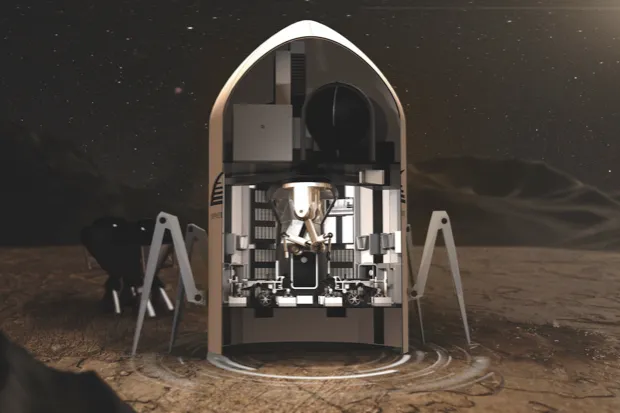
Humans are fragile beasts whose sensitive biology needs a lot of protecting. This is particularly true away from the protective cocoon of our planet’s atmosphere and magnetic field. So if we’re to set up shop elsewhere, we’re going to need to fashion ourselves some decent accommodation.
Shipping a construction kit from Earth is prohibitively expensive, so the buzz acronym right now is ISRU – In Situ Resource Utilisation. Which is a fancy way of saying: “use what’s already there”.
Plans are already underway. In July this year, NASA announced the five winners of its $100,000 ‘3D-Printed Habitat Challenge’ to design a dwelling that would enable people to live and work on Mars, and which could be built using local materials and 3D-printing technology. First place was awarded to Team Zopherus of Rogers, Arkansas, who designed an uncrewed, robotic printer that would land on the Martian surface and deploy rovers to gather local materials. The European Space Agency is also currently working out how to 3D-print building blocks for future space habitats using lunar soil.
Putting up a habitat is a good start, but looking longer-term we might want to ‘terraform’ our new home and make it more Earth-like. This wholesale makeover means fundamentally altering the atmosphere and temperature to create an environment that’s more amenable to liquid water and life.
A study published in June found that an ancient group of microbes called ‘cyanobacteria’ can photosynthesise in extremely low-light conditions, a boon that could one day see them deployed in sheltered areas on toxic planets to take in carbon dioxide and pump out oxygen. Mars is one possible candidate, although another recent study suggests that the Red Planet might not have enough carbon dioxide to do the job.
Fashioning a house is not the same as making a home. For any colony to be successful, its inhabitants have to function as members of a fledgling society. That’s just as much about the people as it is bricks and mortar.
The first settlers will need to draw up a legal system to maintain law and order, perhaps based on our current laws here on Earth. Jobs will need to be created and assigned to those with suitable skills, and institutions will have to be set up quickly to provide medical, educational and economic services. Ideally, this will all be planned before the spacegoers have left Earth, as there’ll be enough to think about on our new home without having to create a functioning society on the hoof!
Where we’ll go - five potential destinations
Location: The Moon
Distance from Earth: 384,400 km (average)
Pros: Could evacuate back to Earth in an emergency. A great testing ground for new technology. No communications delay to speak of.
Cons: Nights that last two weeks. No atmosphere or magnetic field for protection. Wildly fluctuating temperatures.
Location: Mars
Distance from Earth: 225 million km (average)
Pros: The only planet in our Solar System that’s not either too hot or made of gas. Plenty of water ice. Relatively close.
Cons: No magnetic field to protect against radiation. Vicious dust storms the size of continents. Communications with Earth delayed by 20 minutes.
Location: Europa (moon of Jupiter)
Distance from Earth: 628 million km (average)
Pros: More liquid water than all of Earth’s oceans, lakes, rivers and seas combined.
Cons: In the firing line of intense radiation belts created by Jupiter’s magnetic field. Vulnerable to meteorites pulled in by the Solar System’s biggest planet.
Location: Interplanetary space
Distance from Earth: > 1 million km
Pros: Movable. Unlimited space to build a habitat orbiting Earth or another planet – you aren’t restricted by topography. Gravity could be recreated to match Earth’s.
Cons: You’d need to build and assemble everything from scratch, with no help from the landscape.
Location: Kepler-438b
Distance from Earth: 470 light-years (4.4 quadrillion km)
Pros: One of the most Earth-like exoplanets found so far. Sits on the inner edge of its star’s habitable zone.
Cons: Would take more than a human lifetime to reach. Orbits a red dwarf, which are thought to have potentially life-destroying solar flares.
Growing food - What will be on the menu?
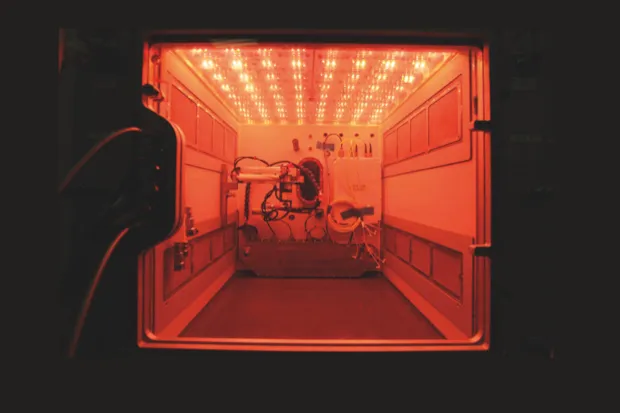
On Earth, vegetarianism and veganism are on the up and up. In space they’ll be a necessity: there simply aren’t enough resources to sustain livestock. So plants it is – but which crops grow best in the harsh arena of space?
Earlier this year, the first green shoots were seen in the International Space Station’s Advanced Plant Habitat (APH) – a growth chamber the size of a mini-fridge. The plants, a small batch of dwarf wheat and Arabidopsis (flowering rockcress), are automatically tended by a computer-based system known as PHARMER, which uses 180 sensors to monitor variables such as temperature, humidity and light levels. This technology complements the ISS’s Vegetable Production System (known as ‘Veggie’), which is designed to produce salad ingredients.
In 2015, astronauts sampled the first lettuce grown in space. The projects haven’t been without their problems, however. Just as on Earth, mould has been a big issue that’s stopped scientists moving on to growing more interesting food like tomatoes. Space gardening is tough, but these are all useful lessons for our first cosmic farmers.
Meanwhile, other scientists have been looking into the possibility of growing plants on Mars. Researchers from Villanova University in Pennsylvania have been running the Red Thumbs Mars Garden Project. They simulated the Martian soil by taking dirt from volcanoes on Earth, and tried growing a range of crops including kale, garlic and potatoes. Light levels were carefully controlled to match those found on a dimmer planet further from the Sun.
The kale grew well, but the clay-like soil was too dense for the growing potatoes to expand and thrive. However, a similar experiment at the International Potato Center in Peru has managed to grow potatoes in Mars-like conditions by using spuds that have been specially bred to tolerate harsher environments – offering hope for all future spacefaring chip-lovers.
The real breakthrough could come if we master the art of synthetic biology – the ability to design, engineer and build biological structures from the ground up. Why try and make earthly plants eke out an existence on Mars when you can engineer new ones specifically designed to thrive there? Automated mini-factories known as biofoundries can test millions of different designs at once by growing various organisms in the lab under strictly controlled conditions. That way, researchers can home in on those species that are hardy enough to survive. In July, a team of Australian scientists published a paper calling for wider investment in the field, suggesting it could become a reality in as little as a decade.
Could we eat our own poo?
Scientists at Penn State University have developed a novel way of making food, which would save us having to lug all of our food with us into space. Yesterday’s human waste is transformed into tomorrow’s lunch.
Urine is already recycled into drinkable water on the ISS, but faeces are sent away in a cargo vessel to burn up in Earth’s atmosphere. Dr Lisa Steinberg, who worked at Penn State before becoming a school science technician, saw this as a wasted opportunity, and developed a system to reuse all of our bodily outgoings.
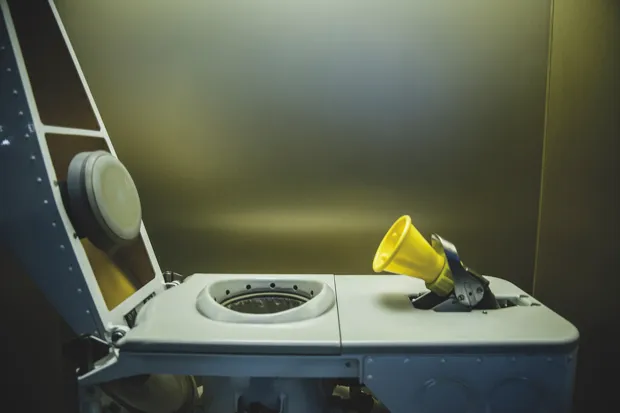
“The system is composed of two reactors,” she says. “The first takes urine and faeces and converts part of the carbon [in the waste] into methane, which is fed to a second reactor growing a methane-consuming bacterial biomass.” The result is a high-protein, high-fat food supplement. Steinberg points out that the food can be grown within a few days – much quicker than plant-based protein sources such as soybeans. However, she cautions that it “would likely complement, not replace, vegetable matter in an astronaut’s diet.”
Is it safe? “[The reactors] only transfer gaseous products, which can be easily filtered to remove pathogens,” she says. “Safety was an important priority.” As for the taste, Steinberg’s team weren’t able to sample the food due to lab protocol, but the texture has been described as similar to Marmite. Whether astronauts can be convinced to eat it is another matter.
Staying fit and healthy - Make friends with the space gym
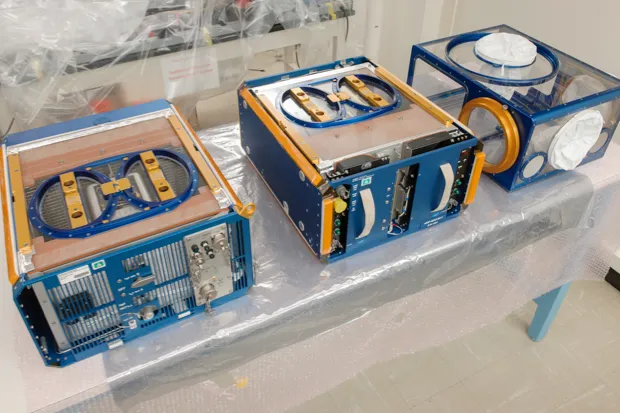
Our bodies don’t react well to the low-gravity environment of space. Our muscles don’t have to work as hard, so they start to waste away. Our bones get weaker and our heart pumps blood slower. To counter this, astronauts spend two hours each day exercising to stave off muscle and bone loss. For a long-duration mission, we’ll need to follow a strict exercise plan, unless we can invent a spacecraft with its own artificial gravity so that the body behaves as it does on Earth.
Past space missions have given us plenty of insight into the physical effects of space, but there’s one major aspect that has, until recently, been neglected – the microbiome. Over the past few years, scientists have become increasingly aware of the crucial role that our body’s army of microbes plays in our health, linked to everything from cancer and obesity to depression and diabetes. So how might our microbiome fare in space?
In March 2015, NASA astronaut Scott Kelly began a year-long stay aboard the ISS – the longest that anyone had spent there – as part of a mission to study the long-term effects of spaceflight on the body. Now, researchers are poring over the data.
“If you’re sending a person into space, you’re not just sending a person, you’re also sending trillions of microorganisms,” says Dr Martha Vitaterna of Northwestern University, one of the scientists studying Kelly’s microbiome.
A diverse gut microbiome is generally thought of as healthy, but both diet and stress can change it pretty quickly. Because Kelly’s diet on the ISS was so restricted, Vitaterna says that the team expected to see a significant decrease in the diversity of microorganisms in his gut, but preliminary results show that this didn’t happen. What’s more any changes that did take place went back to normal fairly quickly once he returned to Earth.
Another NASA project is set to shed even more light on the microbiome in space. Earlier this year, the Rodent Research-7 experiment sent mice to the ISS in a bid to find out how changes in the rodents’ microbiomes impact other aspects of their health, including their sleep and circadian rhythm. The results aren’t expected until next year, but they should help us to understand how humans’ microbiomes, and sleep patterns, might change in space. And if they back up the Scott Kelly study, it’ll be good news. When we do eventually leave Earth for good, we might lose bone and muscle mass, but perhaps we’ll get to keep our microbes.
How we’ll stay sane
Good communications
If we go to Mars, we’ll face a satellite communications delay with Earth of up to 22 minutes. Alongside the physical challenges, this presents a mental one. In the Mars-500 mission – a 17-month simulated Mars mission based in Moscow – the crew had five times as many conflicts with Mission Control as they did among themselves. If we’re going to leave Earth, we’ll need to get used to a laggy connection with those still back at home.
Artificial light
Leaving planet Earth, and losing the 24-hour day/night cycle, could play havoc with our body clocks. In Mars-500, four out of six crew members suffered sleep disorders, with one becoming chronically sleep-deprived, and another shifting their sleep schedule out of sync with everyone else. On a spaceship, this could be overcome with artificial light that mimics natural daylight on Earth. On an alien planet, it could prove to be a tougher problem.
Great entertainment
“Are we nearly there yet?” is going to be a common question on a months-long journey through space. We know greenery on Earth helps reduce stress, so growing food or vegetation on-board could be one leisure activity with added benefits. Another option is virtual reality. At HI-SEAS, a NASA-run simulated space mission housed on a volcano in Hawaii, crew members could escape to their own bespoke VR world through a headset.
A support network
Astronauts invariably say that seeing Earth from space is a profound experience. But what happens when you can no longer see Earth at all? It’s thought that ‘Earth-out-of-view phenomenon’ could lead to anxiety, intense homesickness and depression, especially if family and friends have been left behind. Space pioneers will need a strong social and psychological support network on their new home, to help those who are feeling the effects of leaving Earth.
Making babies - It’s a little more difficult in space...
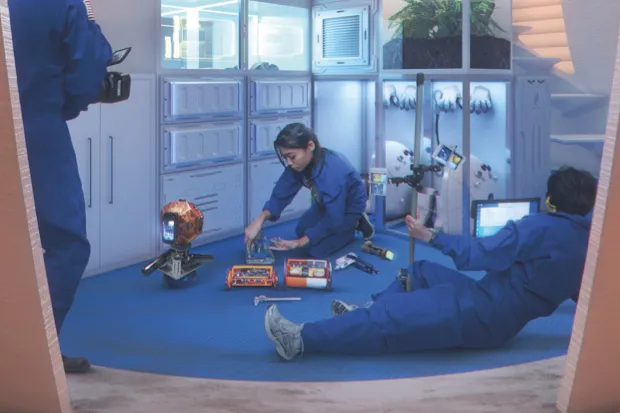
If we’re going to successfully leave Earth, we’ll need to figure out how to conceive in space. One potential hurdle is the effects of weightlessness on sperm – something that’s currently being investigated by NASA.
In April this year, the Micro-11 project sent human sperm to the ISS for the first time. Researchers are still awaiting the results, but previous work from the same team has shown that bull and sea urchin sperm fare pretty well in space. The bull sperm move faster in microgravity (a trait that’s generally associated with higher fertility), while, in sea urchin sperm, the chemicals that get the sperm cells to start swimming also kick in faster.
“Given what we know from the previous data, our hypothesis is that [human] sperm are going to be found to swim faster in microgravity,” says Dr Joseph Tash at the University of Kansas, leader of the Micro-11 project. If this does happen, he hopes the project will be able to figure out why.
But sperm is only half of the equation. Previous experiments on Space Shuttle missions with female mice suggest that microgravity delays the release of mature eggs from ovaries. Tash has got another experiment in the works to test whether this is a long-term effect – if it is, it’ll be another bridge we need to cross.
Another obstacle to making space babies might be high-energy cosmic rays and the charged particles streaming from the Sun. While radiation levels on the ISS are 10 times higher than on Earth’s surface, they’re nothing compared to levels outside the protection of Earth’s magnetic field, which acts as a deflective shield. Radiation can stop sperm and eggs from being produced, and can also cause mutations, leading to damaged foetuses. We’ll need to find ways to shield space travellers from these effects with radiation-proof habitats, or medicines that can help repair DNA damage.
Once we’ve got over these biological hurdles, we’ll also need to make sure that we send enough people to our new home to keep the gene pool healthy and avoid inbreeding. One hypothetical plan for a 6,300-year trip to nearby exoplanet Proxima Centauri b estimates as few as 98 people would be enough to prevent inbreeding. Others think a crew on the order of thousands is a better bet for such a long mission, to cope with the possibility of a catastrophic event and keep the crew as healthy as possible.
Q&A: How to raise a child in space
How can we ensure that our space babies grow up happy? We speak to Portland State University anthropologist Dr Cameron Smith
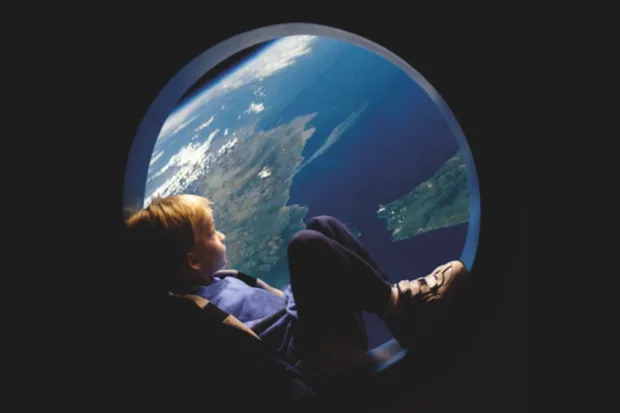
Can it be ethical to raise a child in space?
Philosophers call this concept ‘consent to risk’. Is it morally acceptable to subject somebody to risk without their consent? In this case, I think it is.
Compare it to the people of ancient Polynesia. Three thousand years ago, they set out across the sea looking for new islands. Often entire families went together and were never heard from again. But eventually they colonised the entire Pacific Ocean. Would we call that unacceptable? I don’t think so – they were explorers.
What are the potential risks?
The challenges are both biological and cultural. There’ll be a period when the earliest settlers in space will have higher infant mortality, because we won’t know how to adapt to all the conditions right away. Children will also develop differently under different gravity. Having children in space will require a culture that’s ready to take on those risks and discomforts.
How can we ensure they have a happy childhood?
What we think of as a normal life for a child here on Earth won’t be the same on another planet. In some ways, children will have less freedom. By the age of 10, I could go out exploring by the creek. On Mars, it will be much more dangerous to go outside for a wander.
However, the early years of space settlement will be so carefully planned that children born in space will have a much greater chance of having the food, water and resources they need for a happy life, compared to the average person born on Earth today, where those are rarely guaranteed.
How should we prepare?
What I’d want to do is give the space settlers everything we know about human adaptability, and let them shape their lives themselves. In the end, we can’t predict everything – we have to rely on the adaptability of humanity.
This is an extract from issue 327 of BBC Focus magazine.
Subscribe and get the full article delivered to your door, or download the BBC Focus app to read it on your smartphone or tablet. Find out more

